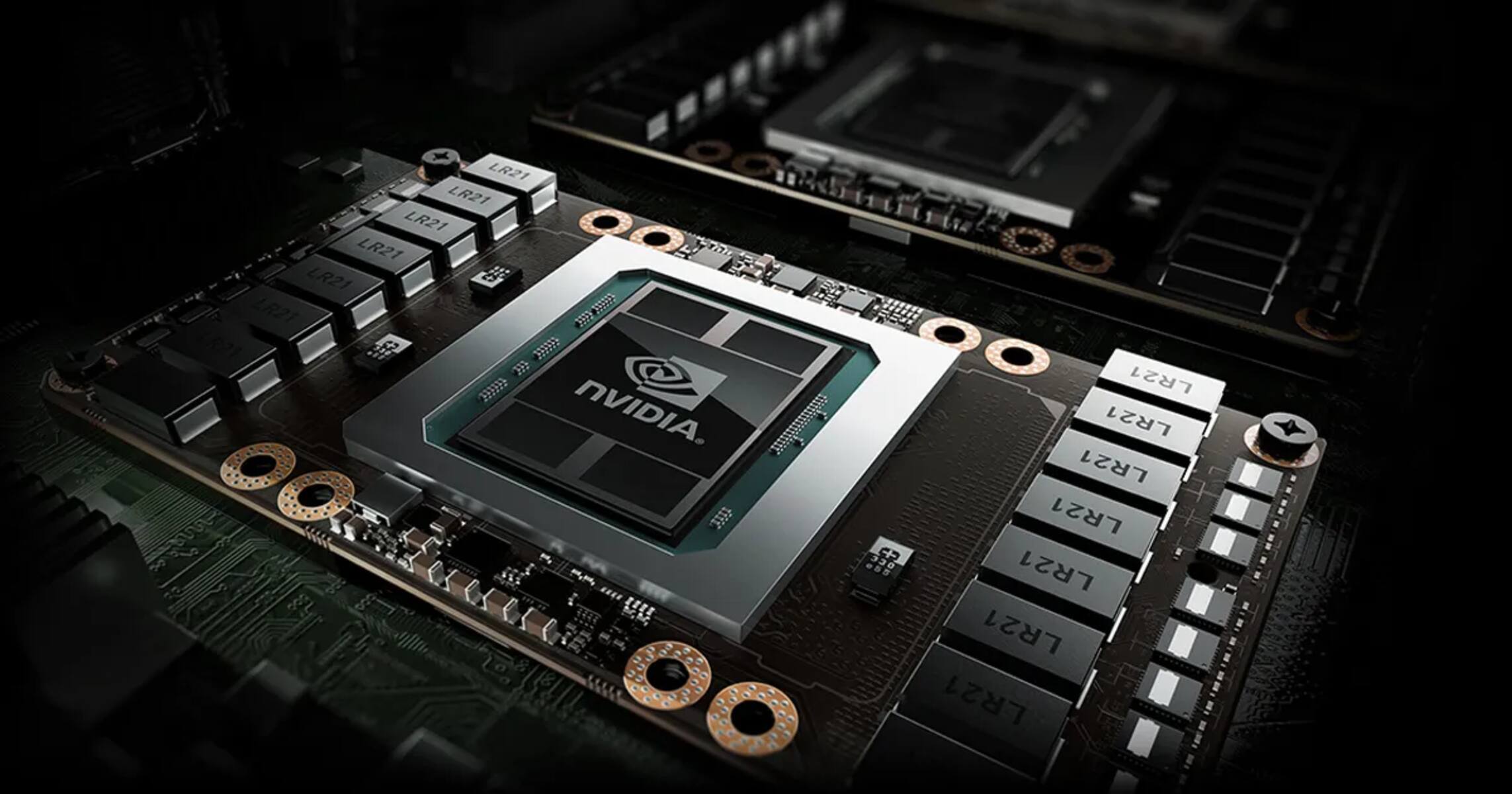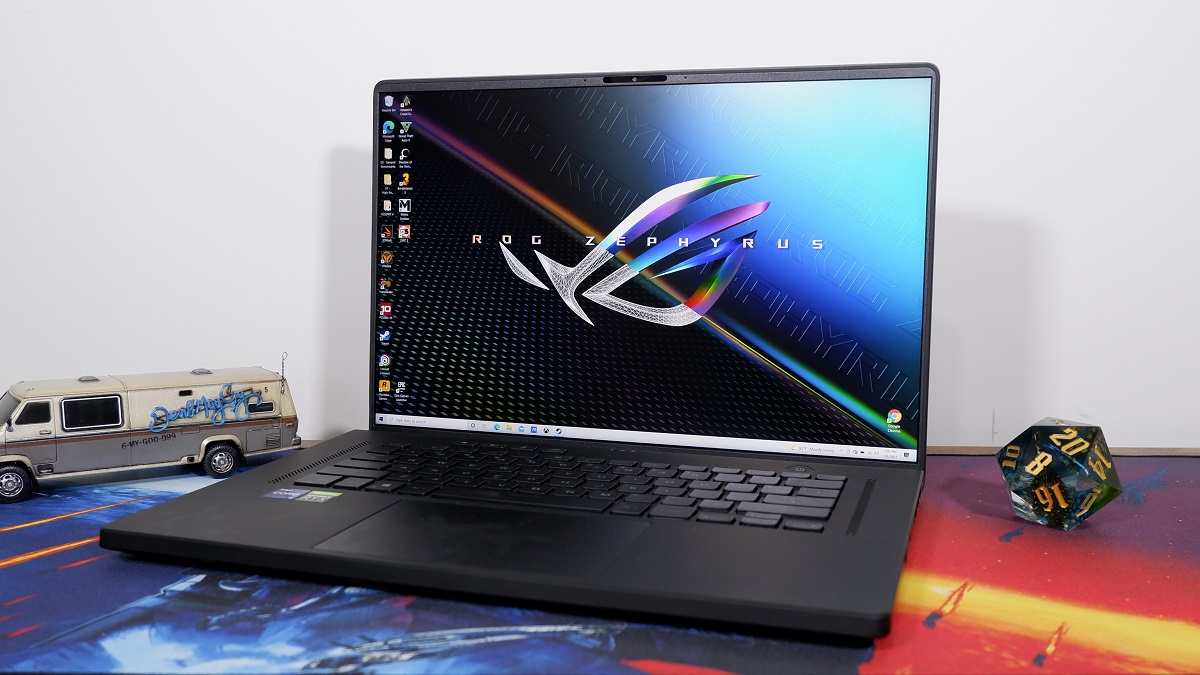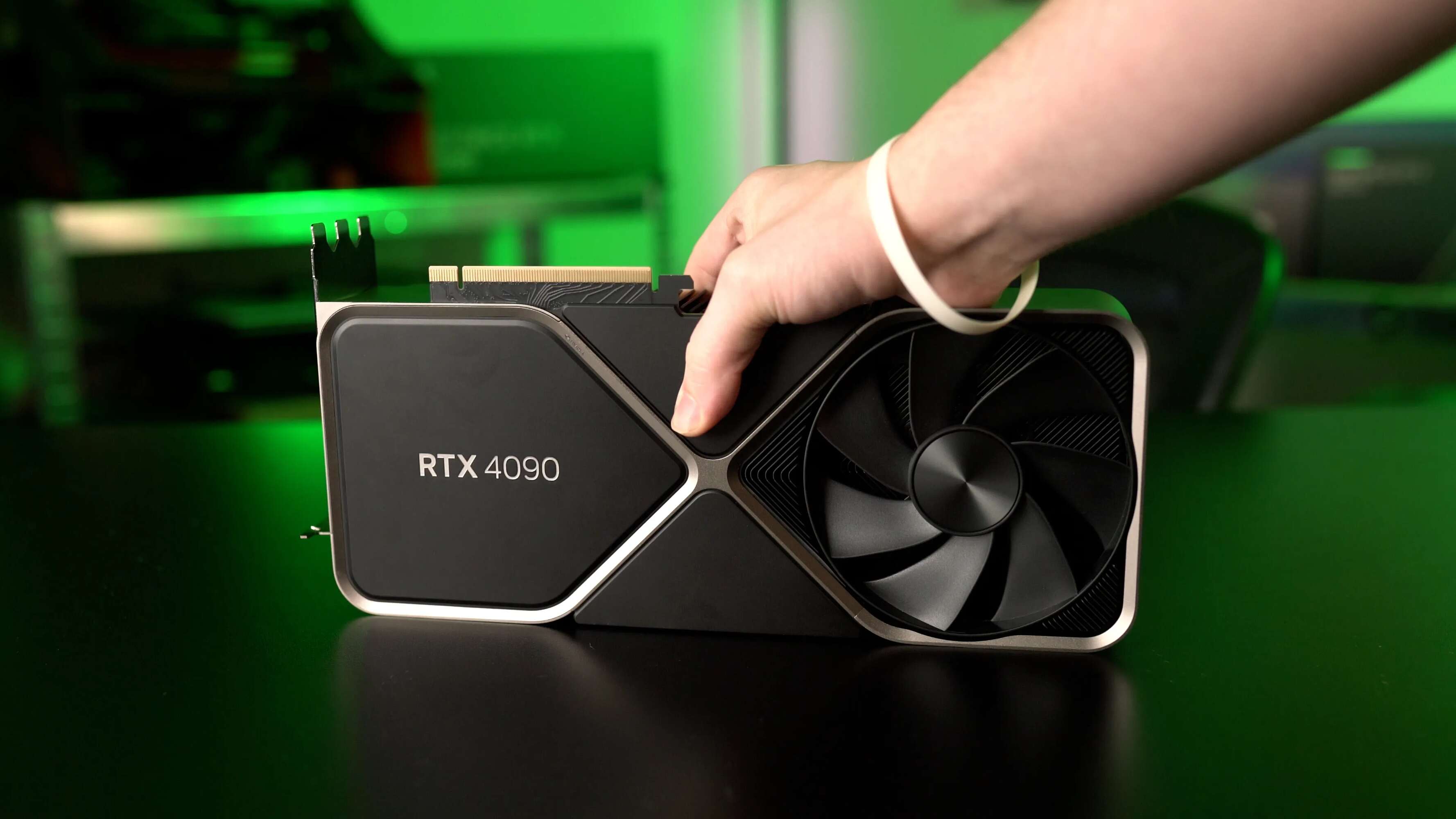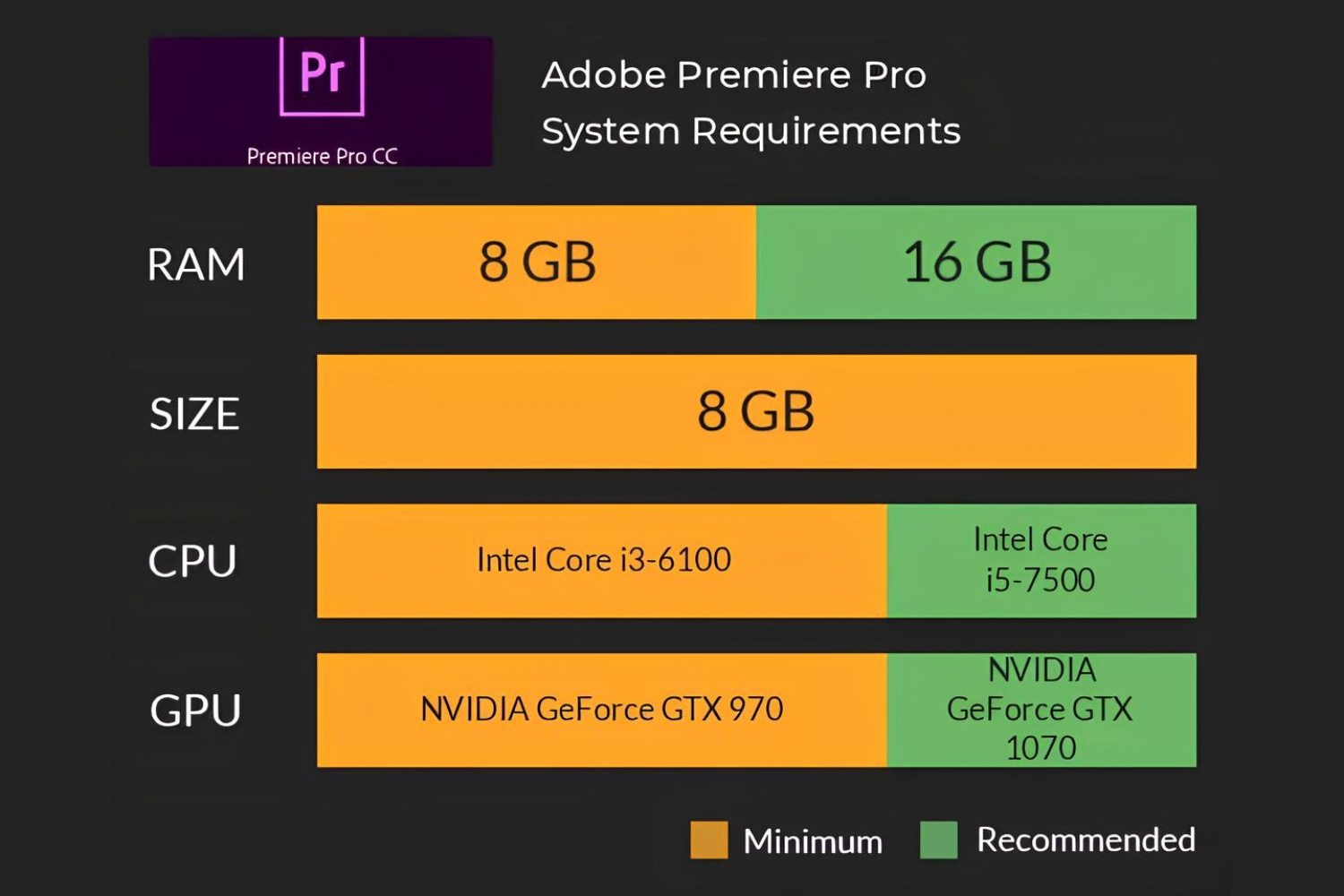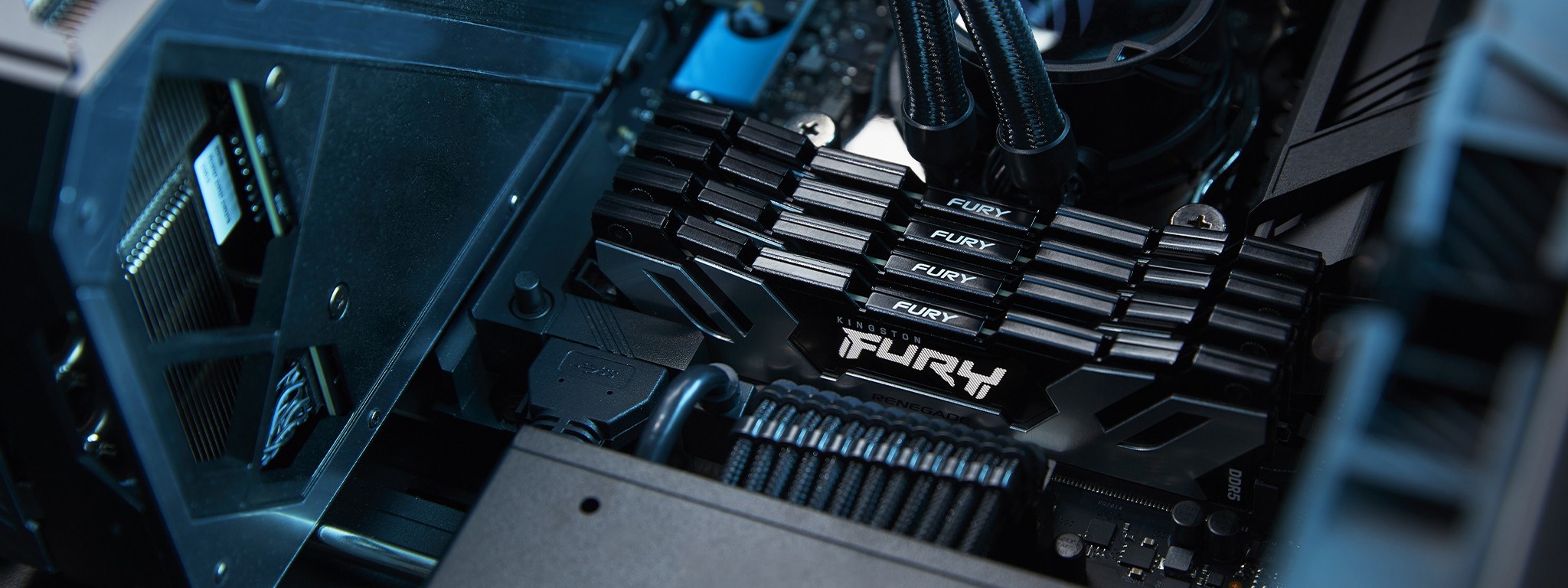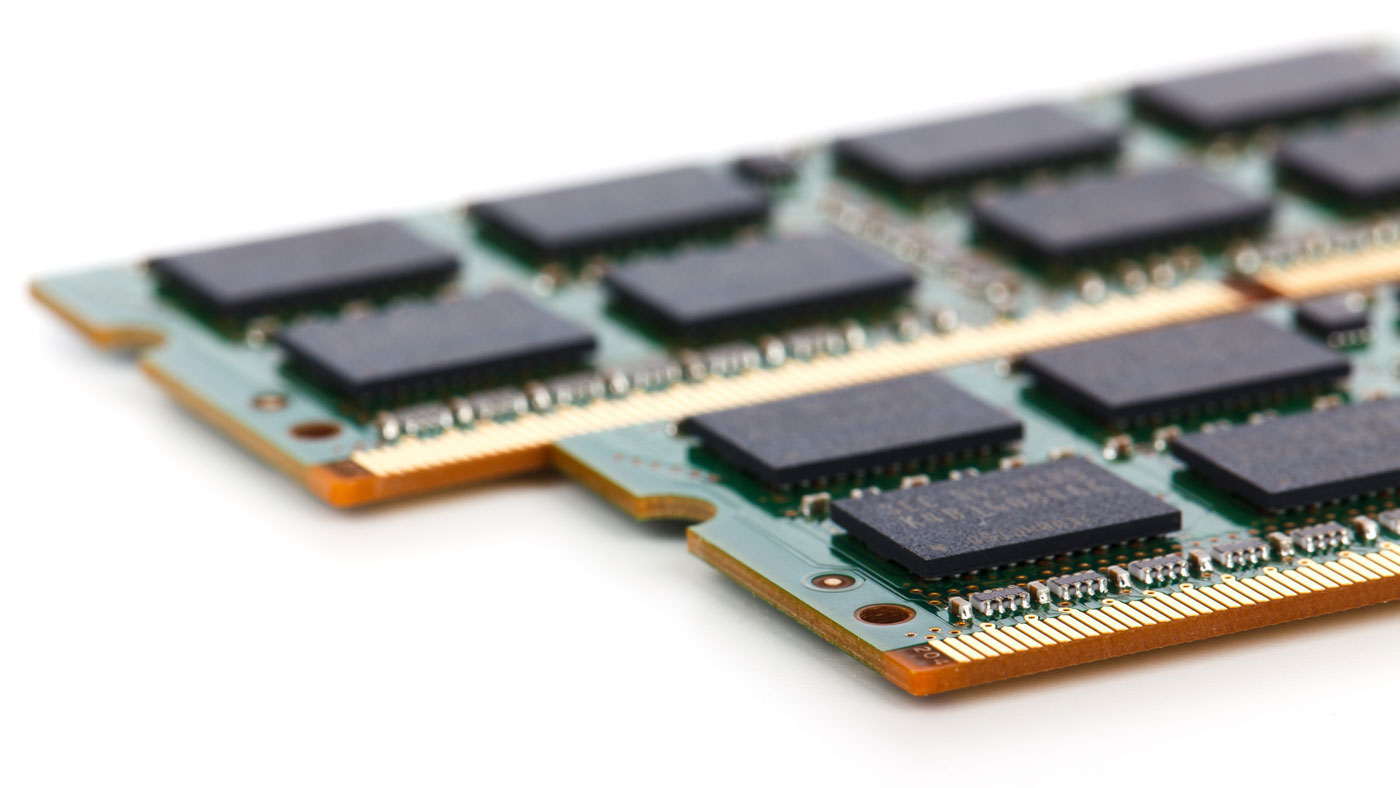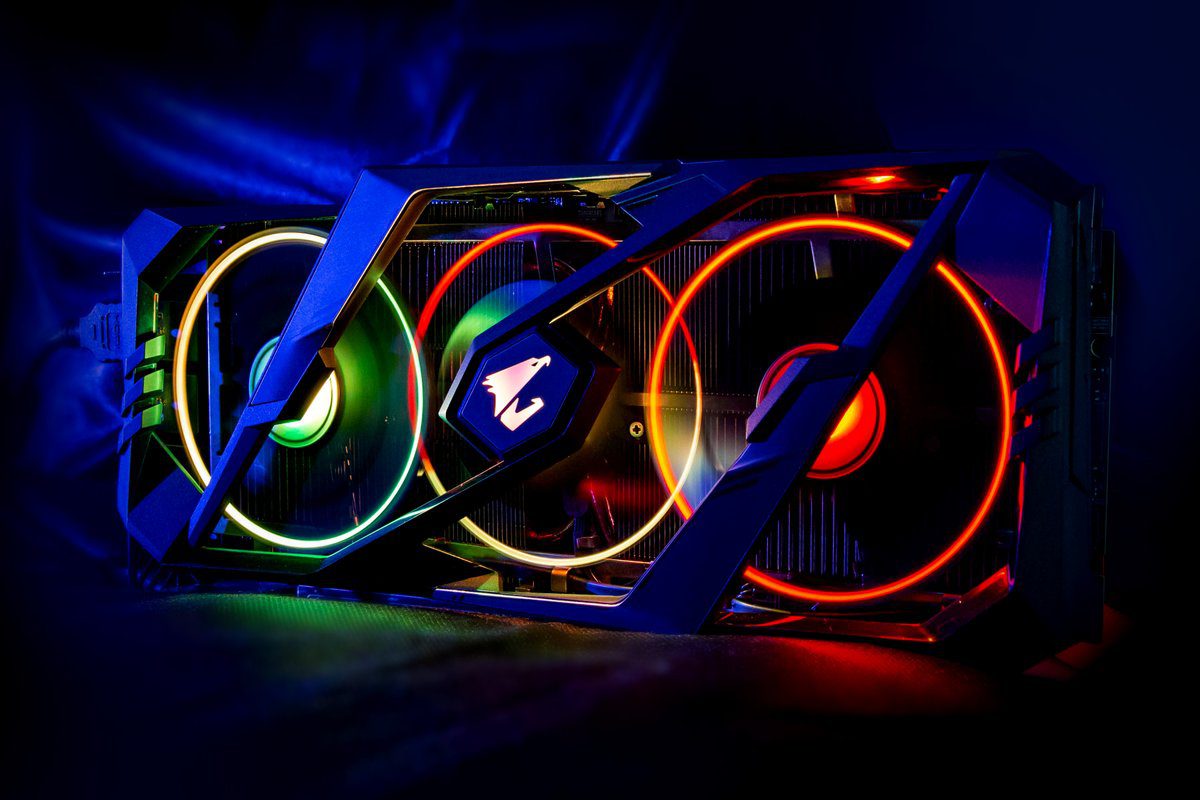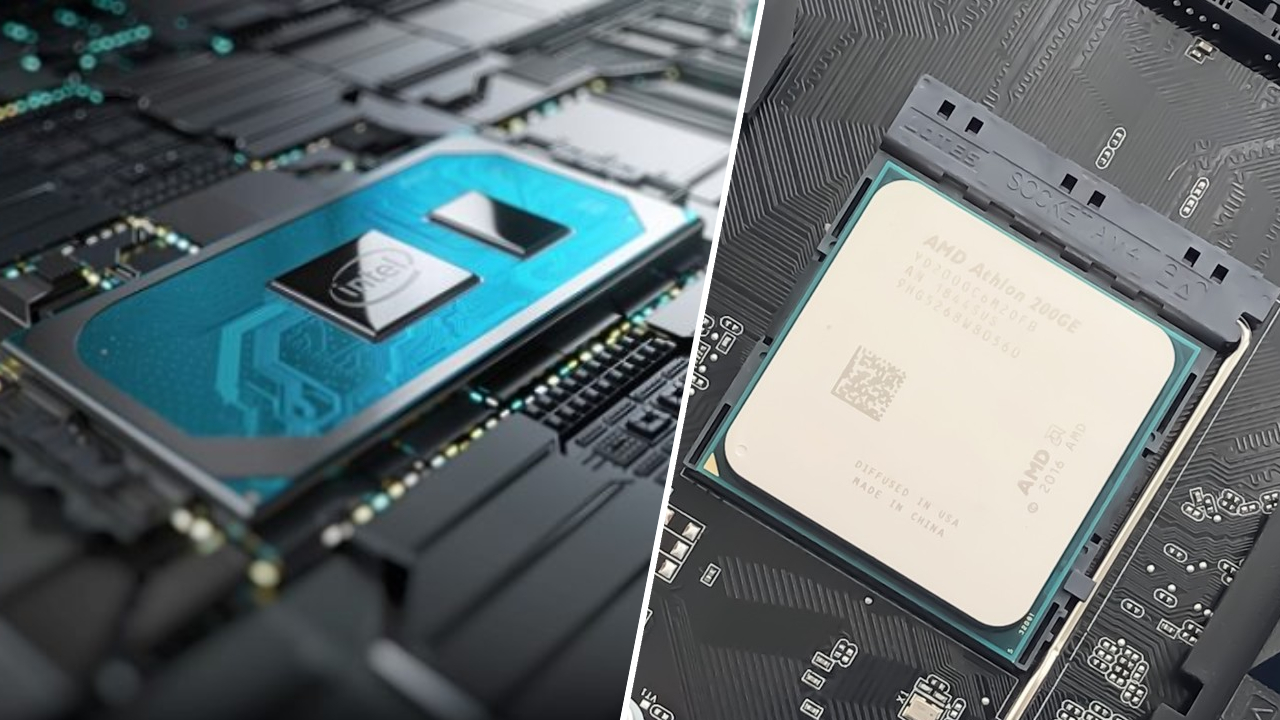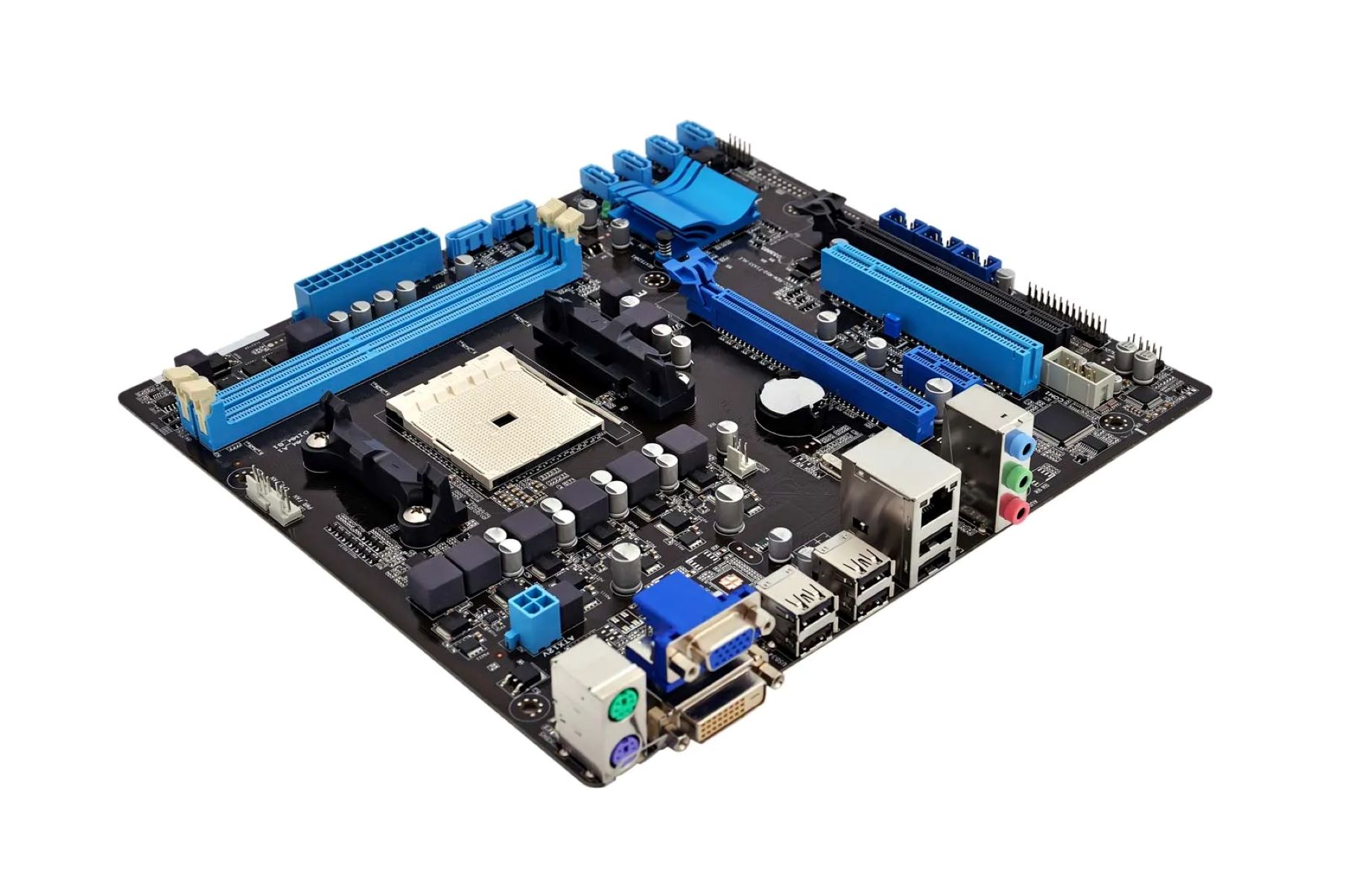Introduction
Welcome to the world of dedicated video RAM! If you’re an avid gamer, video editor, or graphic designer, you’ve probably come across this term before. But what exactly is dedicated video RAM, and why is it so important?
When it comes to graphics-intensive tasks, dedicated video RAM plays a crucial role in determining the performance and quality of visuals on your computer. Whether you’re running demanding games, editing high-resolution videos, or working with complex 3D designs, having an adequate amount of dedicated video RAM can make all the difference.
In this article, we’ll delve into the depths of dedicated video RAM, guiding you through the process of understanding, checking, and optimizing it on different operating systems. Whether you’re a Windows, macOS, or Linux user, we’ve got you covered!
So, if you’ve ever wondered how much dedicated video RAM your system has, or if you can increase it to boost performance, this article is just what you need. We’ll not only help you identify the amount of dedicated video RAM on your computer but also provide valuable tips for optimizing video performance with limited resources.
So, without further ado, let’s dive into the fascinating world of dedicated video RAM and unlock the secrets to maximizing your visual experience!
What is Dedicated Video RAM?
Dedicated Video RAM (VRAM), also known as Graphics Memory or Video Memory, is a specific type of memory that is reserved for use by your computer’s graphics processing unit (GPU). Unlike your computer’s main system memory (RAM), which is used for general computing tasks, dedicated video RAM is designed to store and quickly access data specifically related to graphics processing.
When you run graphics-intensive applications like games or video editing software, the GPU needs a fast and dedicated source of memory to store and manipulate the vast amount of data required for rendering complex visuals. That’s where dedicated video RAM comes into play.
One important thing to note is that dedicated video RAM is separate from your computer’s system RAM. While system RAM is shared between the CPU and other components, dedicated video RAM is exclusively allocated to the GPU, ensuring faster access and reducing processing bottlenecks.
The amount of dedicated video RAM your computer has can vary depending on the specifications of your GPU and computer model. The more dedicated video RAM you have, the better your system will be able to handle graphics-intensive tasks, resulting in smoother gameplay, faster rendering times, and improved overall performance.
It’s also worth mentioning that not all computers come with dedicated video RAM. Some lower-end systems or integrated graphics solutions rely on shared memory, meaning that they utilize a portion of the computer’s system RAM as video memory. While this can work for basic tasks, it typically provides limited performance when it comes to demanding graphical applications.
Now that you have a basic understanding of what dedicated video RAM is, let’s explore why it is important for optimal performance in graphics-intensive tasks.
Why is Dedicated Video RAM Important?
Dedicated video RAM plays a crucial role in ensuring smooth and high-quality graphics performance in your computer. Here are a few reasons why dedicated video RAM is important:
1. Enhanced Performance: When running graphics-intensive applications, having sufficient dedicated video RAM allows the GPU to store and access large amounts of data quickly. This results in smoother gameplay, faster video rendering, and overall improved performance for tasks like 3D modeling, video editing, and gaming.
2. Higher Texture Quality: Dedicated video RAM is responsible for storing textures, which are essential for creating realistic and detailed visuals in games and applications. With more dedicated video RAM, you can have higher-resolution textures, sharper graphics, and better overall image quality.
3. Multitasking and Multi-Monitor Support: If you often work with multiple monitors or engage in multitasking activities, dedicated video RAM becomes even more important. It allows the GPU to handle the increased workload of driving multiple displays while maintaining smooth performance for each screen.
4. Future-Proofing: As technology advances, graphics requirements for applications and games continue to increase. Investing in a system with ample dedicated video RAM ensures that you’re ready to tackle demanding tasks both now and in the future. It provides a longer lifespan for your computer and allows you to enjoy optimal performance as newer and more resource-intensive software becomes available.
5. Optimized Visual Effects: Many modern games and applications utilize advanced visual effects such as dynamic lighting, realistic shadows, and complex particle systems. These effects require substantial GPU memory to render properly. With adequate dedicated video RAM, you can enjoy these visual enhancements without compromising performance.
In summary, dedicated video RAM is essential for achieving smooth, high-quality graphics performance in games, video editing, 3D modeling, and other graphics-intensive tasks. It allows the GPU to store and access large amounts of data quickly, resulting in enhanced performance, higher texture quality, improved multitasking capabilities, future-proofing your system, and optimized visual effects.
How to Check the Dedicated Video RAM on Windows
If you’re using a Windows computer, there are several methods you can use to check the amount of dedicated video RAM available on your system. Here are two commonly used methods:
Method 1: Using System Information
- Press the Windows key + R to open the Run dialog box.
- Type “msinfo32” (without quotes) and press Enter.
- In the System Information window that opens, navigate to “Components” and click on “Display”.
- Look for the “Adapter RAM” field, which indicates the amount of dedicated video RAM available on your system.
Method 2: Using DirectX Diagnostic Tool
- Press the Windows key + R to open the Run dialog box.
- Type “dxdiag” (without quotes) and press Enter.
- In the DirectX Diagnostic Tool window, navigate to the “Display” tab.
- Under the “Device” section, you’ll find the name of your graphics card and the approximate total memory.
- Note that the approximate total memory includes both dedicated video RAM and shared system memory. To determine the dedicated video RAM, subtract the reported shared system memory from the total memory.
By using either of these methods, you can quickly determine the amount of dedicated video RAM available on your Windows computer. This information can be useful for evaluating system requirements for games, applications, and determining if an upgrade may be necessary to meet the demands of your graphics-intensive tasks.
How to Check the Dedicated Video RAM on macOS
If you’re using a macOS computer, you can easily check the amount of dedicated video RAM your system has using the System Information utility. Follow these steps:
- Click on the Apple menu in the top-left corner of the screen and select “About This Mac”.
- In the window that appears, click on the “System Report” button.
- In the System Information window, click on “Graphics/Displays” in the Hardware section on the left-hand side.
- On the right-hand side, you’ll find detailed information about your graphics card.
- Look for the “VRAM (Total)” field, which indicates the amount of dedicated video RAM available on your macOS system.
In addition to the System Information utility, you can also use third-party applications, such as gfxCardStatus, to check the dedicated video RAM on your macOS computer. These applications provide a more user-friendly interface and may offer additional features and information about your graphics card.
By using the System Information utility or third-party applications, you can easily determine the amount of dedicated video RAM available on your macOS computer. This information is valuable for understanding the capabilities of your system and ensuring it meets the requirements for graphics-intensive tasks such as gaming, video editing, and graphic design.
How to Check the Dedicated Video RAM on Linux
If you’re using a Linux-based operating system, there are a few methods you can use to check the amount of dedicated video RAM on your system. Here are two commonly used methods:
Method 1: Using Command Line
- Open a terminal window by either searching for “Terminal” in the applications menu or pressing Ctrl+Alt+T.
- Type the following command and press Enter:
sudo lshw -C display - Enter your password when prompted.
- Scroll through the displayed information and look for the “size” parameter. It indicates the amount of dedicated video RAM on your Linux system.
Method 2: Using GPU-Z
- Download and install the GPU-Z utility for Linux from the official website.
- Launch GPU-Z from the applications menu or by searching for it.
- Once opened, the utility will provide detailed information about your GPU, including the dedicated video memory (VRAM) in the “Memory Size” field.
By using either of these methods, you can check the amount of dedicated video RAM available on your Linux system. This information is useful for determining the capabilities of your system and ensuring it meets the requirements for graphics-intensive tasks such as gaming, multimedia editing, and 3D rendering.
How to Increase Dedicated Video RAM
Increasing the dedicated video RAM on your computer can significantly improve graphics performance, especially for resource-intensive tasks like gaming, video editing, and 3D rendering. However, please note that the ability to increase dedicated video RAM depends on your hardware and BIOS/UEFI settings. Here are a few methods you can try:
Method 1: Update your Graphics Drivers
Ensure that you have the latest graphics drivers installed for your GPU. Visit the website of your GPU manufacturer (such as NVIDIA, AMD, or Intel) and download the latest drivers for your specific graphics card model. Updated drivers often include optimizations and improvements that can enhance performance, including potentially allowing for more efficient utilization of video memory.
Method 2: Adjust BIOS/UEFI Settings
Some computer systems allow you to adjust the amount of dedicated video RAM through the BIOS/UEFI settings. Here’s how you can access and make changes if available:
- Restart your computer and access the BIOS/UEFI setup by pressing the designated key during startup (common keys include Del, F2, F10, or Esc).
- Navigate to the “Advanced” or “Advanced Chipset” section and look for an option related to “Graphics Settings” or “Video Settings”.
- Adjust the value to increase the allocated amount of dedicated video RAM. Note that the available options and terminology may vary depending on your system’s BIOS/UEFI interface.
- Save the changes and exit the BIOS/UEFI setup. Your computer will restart, and the updated video RAM allocation should take effect.
Method 3: Contact the Manufacturer
If you’re using a pre-built computer or a laptop, the option to increase dedicated video RAM may be limited or unavailable. In such cases, it’s best to contact the manufacturer’s support and inquire about the possibility of increasing the dedicated video RAM. They can provide guidance specific to your hardware and advise you on any available options or alternatives.
It’s important to note that while these methods may allow for an increase in dedicated video RAM, the extent of the increase may vary and could be limited by hardware constraints. It’s also worth mentioning that allocating too much video RAM may result in reduced system RAM availability, which could impact overall performance.
Before attempting to increase dedicated video RAM, it’s always recommended to ensure that your computer meets the recommended system requirements for your specific tasks. Additionally, optimizing graphics settings in games and applications can also help maximize performance within the available video memory.
Tips for Optimizing Video Performance with Limited Dedicated Video RAM
If you’re working with limited dedicated video RAM on your computer, optimizing video performance becomes crucial for an enjoyable experience. Here are some tips to help you make the most out of your resources:
1. Adjust Graphics Settings: Lowering graphics settings in games and applications can significantly reduce the demand for video memory. Experiment with reducing settings like texture quality, shadow resolution, anti-aliasing, and view distance to find a balance between performance and visual quality.
2. Close Unnecessary Programs: Close any unnecessary background programs to free up system resources. This includes web browsers, file-sharing applications, and other memory-intensive software that may compete for available video memory.
3. Optimize Display Resolution: Running your display at a lower resolution can alleviate the strain on video memory by reducing the number of pixels that need to be rendered. However, keep in mind that this may affect the overall visual quality.
4. Use Hardware Acceleration: Take advantage of hardware acceleration features in software whenever possible. Hardware acceleration offloads some of the processing tasks from the CPU to the GPU, which can help alleviate the burden on video memory.
5. Update Drivers: Ensure that you have the latest drivers for your GPU installed. Graphics driver updates often include performance optimizations and bug fixes that can improve video performance with limited video memory.
6. Monitor System Resources: Keep an eye on your system’s resource usage using tools like Task Manager (Windows) or Activity Monitor (macOS). This will help you identify any processes or applications that are consuming excessive video memory and take appropriate action.
7. Avoid Multitasking: Limit multitasking activities, especially when working with graphics-intensive tasks. Closing unnecessary applications and allocating system resources specifically for the task at hand can help reduce the strain on video memory.
8. Use Lightweight Software Alternatives: Consider using lightweight or optimized versions of software applications whenever possible. These versions are designed to work efficiently even with limited resources, including video memory.
9. Clear Temporary Files: Regularly clean up temporary files and clear the cache of applications. Accumulated junk files can consume valuable video memory and impact performance.
10. Upgrade Hardware: If optimizing settings and software are not sufficient, upgrading your hardware may be necessary. Consider adding more dedicated video RAM to your system or upgrading to a more powerful GPU that can handle your graphics-intensive tasks with ease.
By implementing these tips, you can help optimize video performance even with limited dedicated video RAM. Remember, continuously monitoring system performance and adjusting settings accordingly will help you find the optimal balance between performance and visual quality for your specific needs.
Conclusion
Understanding dedicated video RAM and its importance is crucial for anyone involved in graphics-intensive tasks like gaming, video editing, and graphic design. Dedicated video RAM plays a vital role in providing smooth and high-quality graphics performance, enhancing gameplay, and improving overall visuals.
In this article, we explored what dedicated video RAM is and why it is essential for optimal performance. We also discussed how to check the dedicated video RAM on various operating systems, including Windows, macOS, and Linux.
Additionally, we provided insights on increasing dedicated video RAM, if possible, through methods such as updating graphics drivers and adjusting BIOS/UEFI settings. We also highlighted tips for optimizing video performance with limited dedicated video RAM, including adjusting graphics settings, monitoring system resources, and utilizing hardware acceleration.
It’s crucial to note that while increasing dedicated video RAM can positively impact graphics performance, the extent of the increase may be constrained by hardware limitations. Moreover, optimizing software and settings, and keeping an eye on system resources are equally crucial for maximizing performance within the available video memory.
Whether you’re a passionate gamer, a video editing enthusiast, or a professional graphic designer, understanding and optimizing your dedicated video RAM will allow you to unlock the full potential of your system, ensuring you have an immersive and visually stunning experience.







